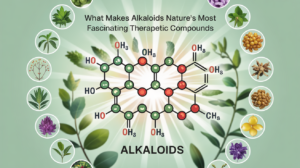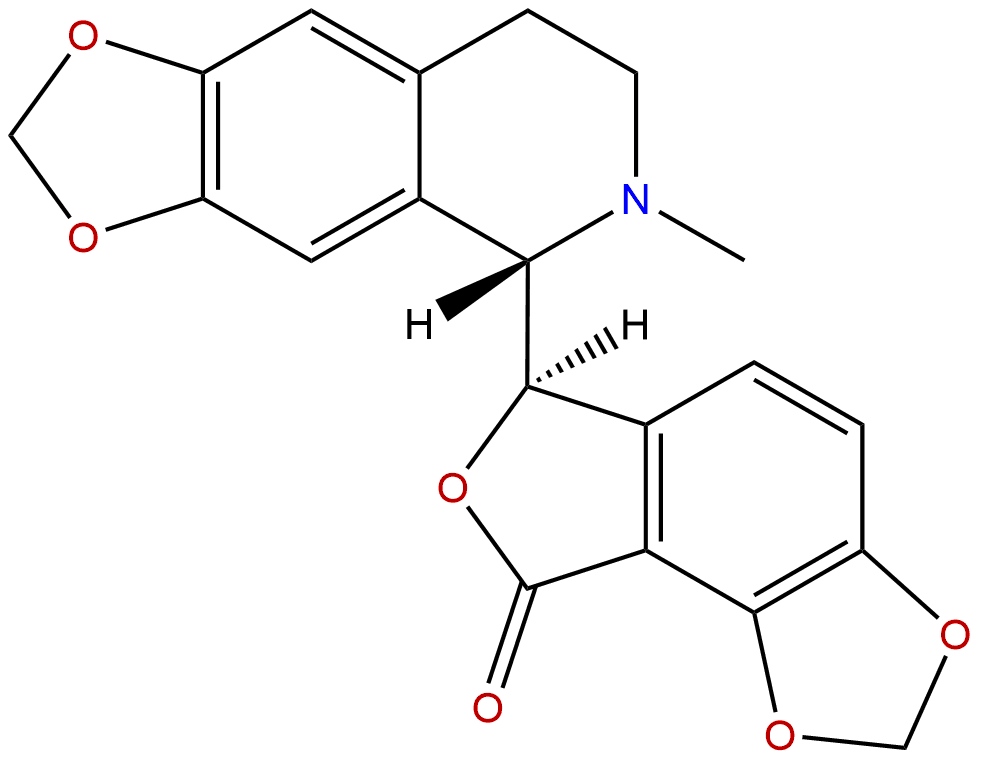





Bicuculline stands as one of the most significant tools in modern neuroscience research. As a potent and selective GABAA receptor antagonist, this naturally occurring alkaloid has revolutionized our understanding of inhibitory neurotransmission in the central nervous system.
This comprehensive guide explores bicuculline’s mechanism of action, research applications, chemical properties, and handling considerations to provide researchers with the knowledge needed to effectively utilize this powerful compound.
Bicuculline is a naturally occurring alkaloid first isolated from plants of the Dicentra species, including Dicentra cucullaria, as well as species of Adlumia, Fumariaceae, and Corydalis 1. Its most significant pharmacological property is its ability to function as a competitive antagonist at GABAA receptors.
Bicuculline contains a tetrahydroisoquinoline nucleus, a structural feature common to many convulsant alkaloids. The molecule includes:
These structural elements collectively contribute to bicuculline’s ability to antagonize GABAA receptors with high selectivity.
Bicuculline blocks inhibitory neurotransmission by:
Unlike some other GABA antagonists, bicuculline acts primarily at the orthosteric site (the same binding site as GABA itself), though it may interact with additional receptor sites due to its larger molecular size compared to GABA 1.

The identification of bicuculline as a selective GABA antagonist in 1970 represented a watershed moment in neuroscience research. Before this discovery, scientists lacked a reliable tool to distinguish GABA-mediated inhibition from other forms of neural inhibition.
In March 1970, David Curtis and colleagues first demonstrated bicuculline’s selective antagonism of GABA’s inhibitory effects without influencing glycine-mediated inhibition 1. This discovery provided the first definitive pharmacological evidence for GABA’s role as an inhibitory neurotransmitter.
The scientific community quickly recognized the significance of this finding, with the journal Nature publishing an editorial titled “Advantages of an Antagonist” alongside the original research paper 1. This editorial correctly predicted that bicuculline would enable scientists to rapidly map the distribution of GABA-inhibitory synapses throughout the nervous system.
Bicuculline’s discovery directly contributed to establishing GABA as the primary inhibitory neurotransmitter in the mammalian brain. By selectively blocking GABA-mediated inhibition, researchers could:
This work formed the foundation for our current understanding of inhibitory neurotransmission and continues to influence research in epilepsy, anxiety disorders, and other conditions involving GABAergic dysfunction.
Bicuculline continues to be an indispensable tool in numerous neuroscience research areas. Its highly selective antagonism of GABAA receptors makes it valuable for investigating inhibitory neurotransmission in various experimental contexts.
In electrophysiology, bicuculline helps researchers:
Key application: When applied during patch-clamp recordings, bicuculline blocks spontaneous inhibitory postsynaptic currents (sIPSCs), allowing researchers to confirm their GABAergic nature.
Bicuculline has been instrumental in understanding how GABA’s role changes during development:
As a convulsant, bicuculline helps create experimental models of epilepsy:
Bicuculline’s differential effects on various GABAA receptor subtypes make it valuable for receptor classification:
For researchers working with bicuculline, understanding its chemical properties and stability is essential for experimental success.
Bicuculline is available in several forms, each with distinct properties:
Research tip: For most in vitro applications, the quaternary salts are preferred due to their improved stability and solubility.
One of bicuculline’s key limitations is its chemical instability in aqueous solutions, particularly at physiological pH 1. The compound undergoes conversion to the much less active bicucine through lactone ring opening.
To maximize stability:
Important consideration: While quaternary salts offer improved stability, they do not readily cross the blood-brain barrier, making them less suitable for systemic administration in in vivo studies 1.
While bicuculline was the first selective GABAA receptor antagonist discovered, several others have since been developed. Understanding their comparative properties helps researchers select the most appropriate tool for specific applications.
Mechanism differences:
Selectivity profile:
Research applications:
Gabazine represents a newer generation of GABAA antagonists with several distinct properties:
Research choice consideration: For extended recordings or when off-target effects are a concern, gabazine often represents the preferred choice over bicuculline.
As a potent convulsant and pharmacologically active compound, bicuculline requires appropriate safety measures during handling and experimental use.
When working with bicuculline:
Researchers should be aware of bicuculline’s potent physiological effects:
In vivo research considerations: When using bicuculline in animal studies, appropriate protocols for managing potential seizures should be in place, including having anticonvulsant medications available.
The purity and quality of bicuculline significantly impact experimental outcomes. At BIORLAB, we understand the critical importance of providing researchers with the highest quality compounds.
When selecting bicuculline for research:
To maintain bicuculline quality:
No. While bicuculline antagonizes most GABAA receptors, those containing α6 subunits show reduced sensitivity, and GABAC receptors (containing ρ subunits) are insensitive to bicuculline 1. This differential sensitivity has helped researchers classify GABA receptor subtypes.
Variations in reported potency can result from:
Yes, bicuculline can be used for in vivo studies, particularly for creating acute seizure models. However, researchers should note:
Yes. Though primarily known as a GABAA antagonist, bicuculline and especially its quaternary salts can:
These additional effects should be considered when interpreting experimental results.
More than five decades after its discovery as a GABA antagonist, bicuculline remains an essential tool in neuroscience research. Its selective antagonism of GABAA receptors continues to provide valuable insights into inhibitory neurotransmission, neural circuit function, and the pathophysiology of disorders involving GABAergic dysfunction.
Despite the development of newer GABA antagonists, bicuculline’s historical significance and well-characterized pharmacological profile ensure its continued relevance in both fundamental and applied neuroscience research.
At BIORLAB, we’re committed to supporting neuroscience advancement by providing high-purity bicuculline and expert technical guidance. Our scientific team is available to assist researchers in selecting the appropriate bicuculline form for specific applications and optimizing experimental protocols.
For researchers seeking high-quality bicuculline or custom solutions for neuroscience applications, contact BIORLAB’s technical support team for personalized assistance and expert guidance.
Get The Latest Updates and Promotion Information.
